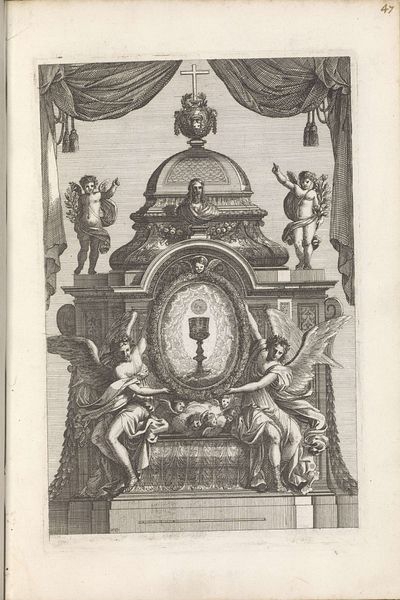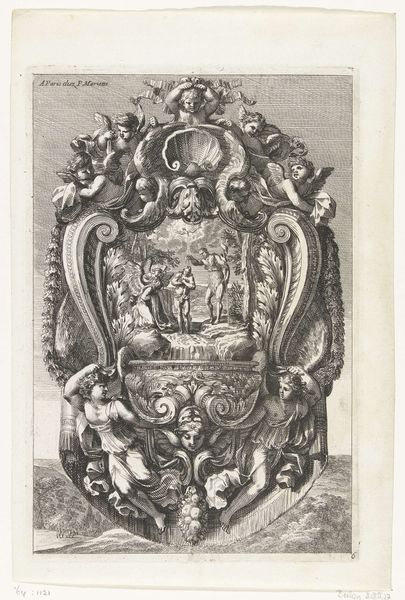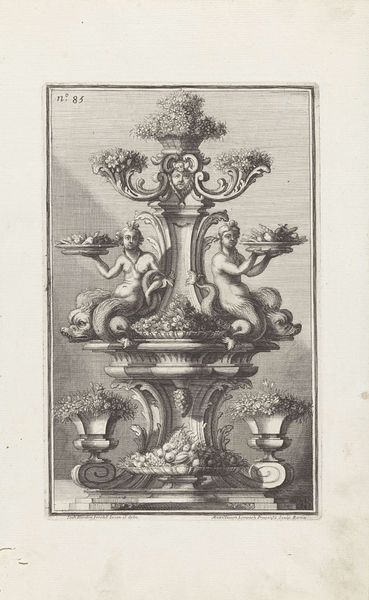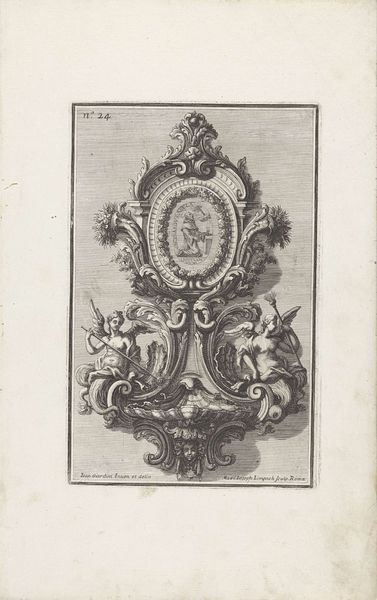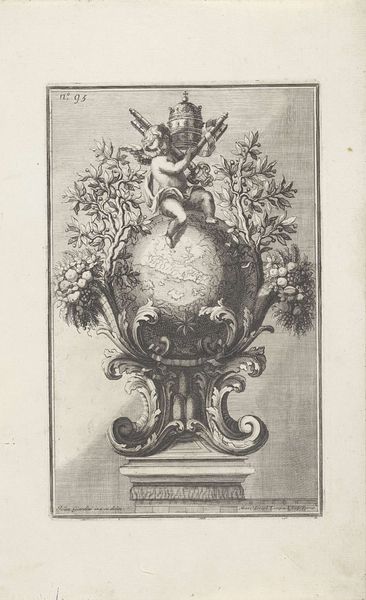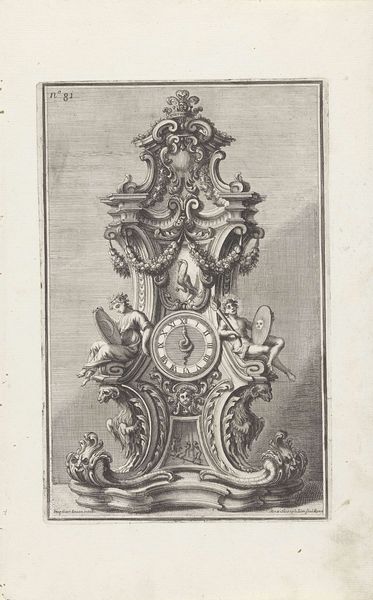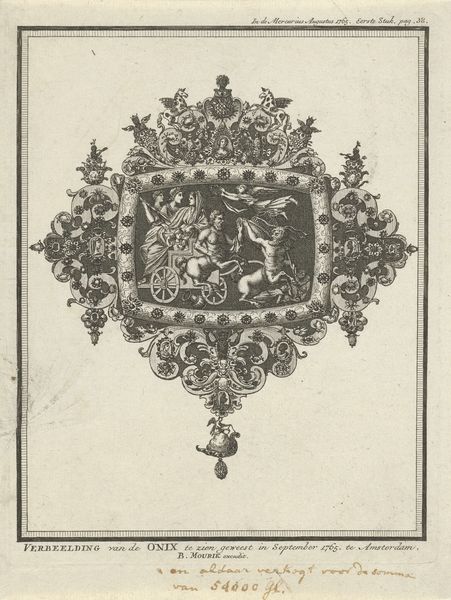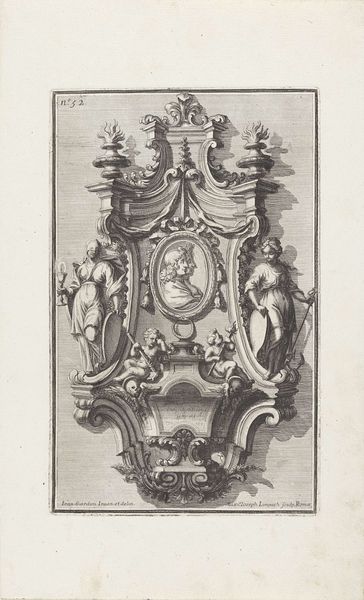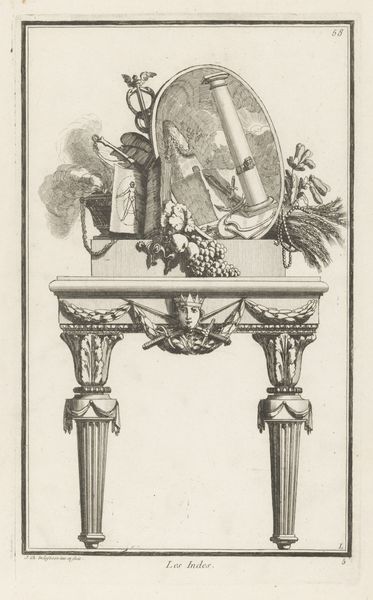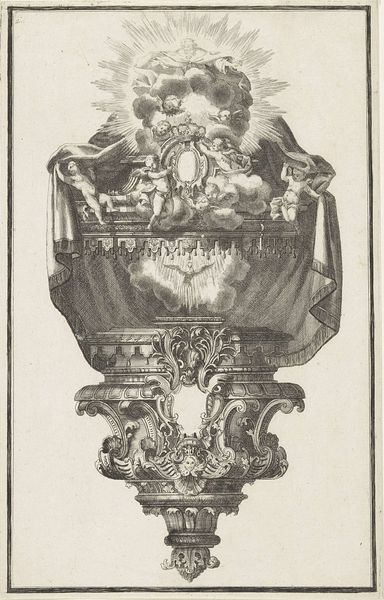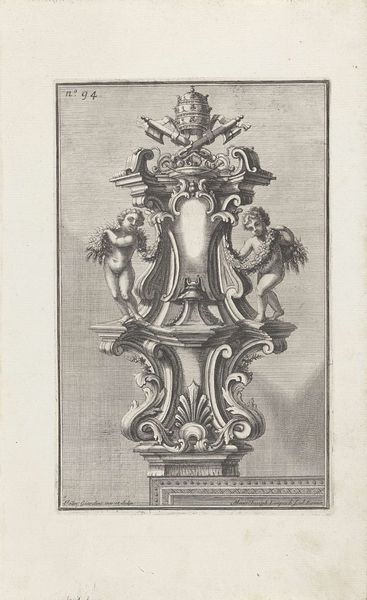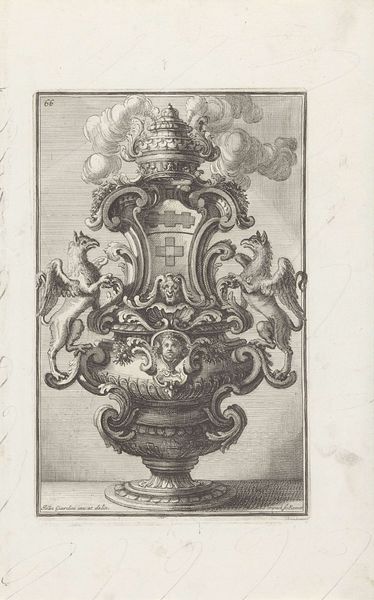
Dimensions: height 331 mm, width 204 mm
Copyright: Rijks Museum: Open Domain
Editor: Here we have "Wapenschilden met wapens en leeuwen," or "Coats of Arms with Weapons and Lions," a print and engraving by Jean Pelletier, dating from between 1772 and 1779. I’m immediately drawn to the incredible detail rendered with seemingly simple lines. What stands out to you about this piece? Curator: What strikes me is the explicit display of power through material representation. We're not just looking at symbolic images, but a carefully constructed display meant to be reproduced and distributed widely. The engraving technique itself is part of the message. Consider the labor involved in creating these detailed lines, the plates used, and how these prints were intended to circulate within a specific market of consumers interested in demonstrating prestige. It elevates functional craft to an aristocratic sphere, don’t you think? Editor: Definitely. It feels like a deliberate act to blur the line between a decorative object and an explicit emblem of authority. How does that blurriness function in the broader scope of art production at the time? Curator: The Baroque period often used excessive ornamentation to indicate luxury, a concept reinforced through the very act of meticulously crafting this engraving. We can think of these coats of arms as both objects of aesthetic contemplation and commodities in a system of social stratification. Who benefits from such images? How were these images consumed? Were there societal shifts occurring that gave rise to a need to manufacture these signifiers of social standing and power? Editor: I see what you mean. This makes me think about the changing landscape of labor, particularly craft production, and how something like an engraving could play into the distribution and validation of power structures. It's more than just a pretty picture; it's about the materialization of hierarchy. Curator: Precisely! By focusing on the material conditions and production process, we get a glimpse into the complex interplay between art, labor, and social standing. Editor: I’ll definitely view these types of ornamental pieces through a new, more critical lens now.
Comments
No comments
Be the first to comment and join the conversation on the ultimate creative platform.
